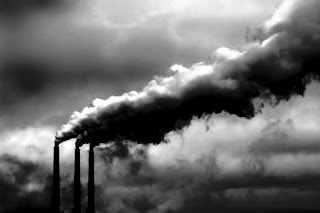Global Warming Gases
Global Warming Gases - Biggest spike ever in global warming gases: US, The amount of global warming gases sent into the atmosphere made an unprecedented jump in 2010, according to the US Department of Energy's latest world data on carbon dioxide emissions.
"It's big," said Tom Boden, director of the Carbon Dioxide Information Analysis Center Environmental Sciences Division at the DOE's Oak Ridge National Laboratory in Tennessee.
"Our data go back to 1751, even before the Industrial Revolution. Never before have we seen a 500-million-metric-ton carbon increase in a single year," he told AFP.
The 512 million metric ton increase amounted to a near six percent rise between 2009 and 2010, going from 8.6 billion metric tons to 9.1 billion.
Large jumps, measured from C02 emissions released into the atmosphere as a result of burning coal and gas, were visible in China, the United States and India, the world's top three polluters.
Significant spikes over 2009 were also seen in Saudi Arabia, Turkey, Russia, Poland and Kazakhstan.
Some countries, like Switzerland, Azerbaijan, Slovakia, Spain, New Zealand and Pakistan actually showed slight declines from 2009 to 2010, but those nations were uncommon. Much of Europe showed a moderate uptick.
The figures could indicate economic recovery from the global recession of 2007-2008, according to Boden.
"At least from an energy consumption standpoint, companies were back to manufacturing levels that rivaled pre-2008 levels, people were traveling again so emissions from the transportation sector rivaled those of pre-2008," he said.
But the data also raised concerns about the health of the environment.
"This is very bad news," said John Abraham, associate professor at the University of St. Thomas School of Engineering in Minnesota.
"These results show that it will be harder to make the tough cuts to emissions if we are to head off a climate crisis."
The data is derived from United Nations statistics gathered from every country in the world about fossil fuel energy stockpiles, imports, exports and production, as well as energy data compiled by oil giant BP.
"If you know how much of a fuel is consumed and you know the oxidation rate and you know the carbon content of the fuel, you can derive the emission estimate, so it is a pretty straightforward algorithm as far as the calculation," said Boden.
The US team has been calculating the data in the same way over the past two decades, so the hike in 2010 was initially viewed with disbelief by Boden and some if his colleagues.
"We were a bit shocked. Our first reaction was, 'Gee, there must be some problems in the underlying energy data,'" he said.
"Then, when we actually started to explore other data streams, like the population data, like GDP data, and when we started to look at the actual atmospheric data, all of it paints a consistent picture and we believe it."
China alone was the biggest polluter with a spike of 212 million metric tons in 2010 over 2009, compared to 59 million metric tons more from the United States and 48 million metric tons more from India.
"Science tells us that we are driving in a fog headed toward a cliff but are unsure just how far away it is," said climate scientist Scott Mandia.
"Given this warning, it is quite foolish to be stepping on the accelerator."
via: yahoo
